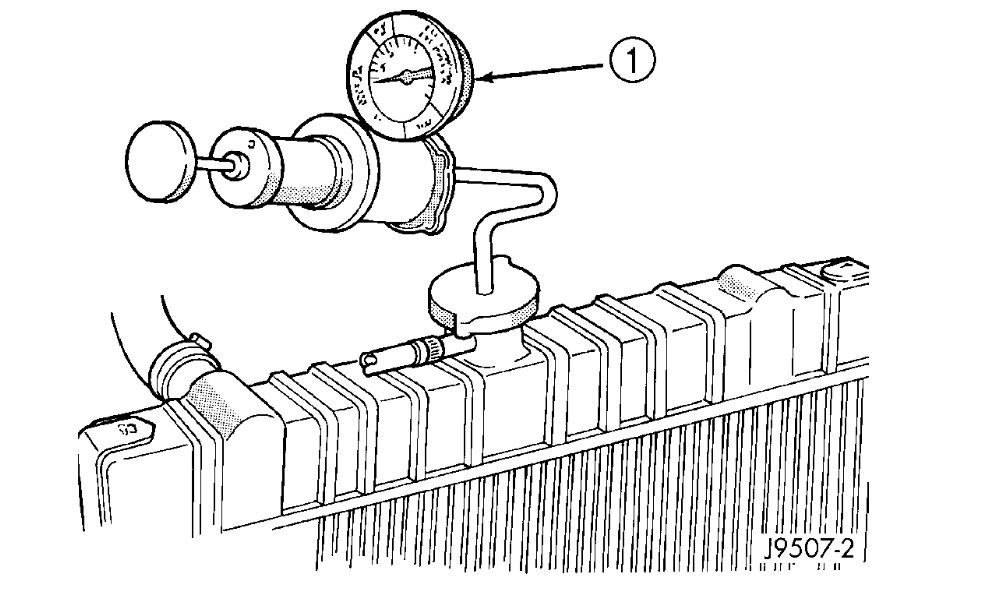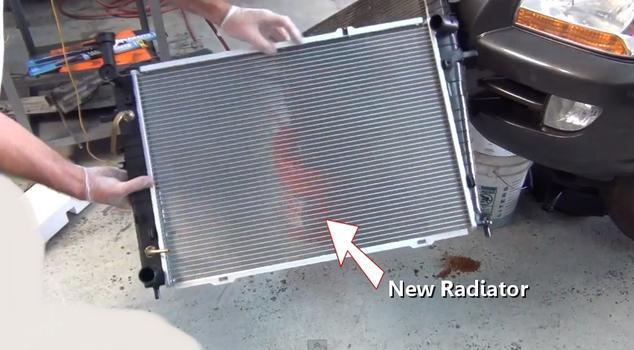Good evening,
Adding a stop leak was not good. That never works and clogs up the heater core and radiator. That will add to your issues.
You need to have the system pressure tested to determine the leak. Once you identify the leak, let me know and we can discuss options.
https://www.2carpros.com/articles/radiator-pressure-test
Roy
The engine should be at normal operating temperature. Recheck the system cold if cause of coolant loss is not located during the warm engine examination.
WARNING: HOT, PRESSURIZED COOLANT CAN CAUSE INJURY BY SCALDING.
Carefully remove radiator pressure cap from filler neck and check coolant level. Push down on cap to disengage it from stop tabs. Wipe inside of filler neck and examine lower inside sealing seat for nicks, cracks, paint, dirt and solder residue. Inspect radiator-to-reserve/overflow tank hose for internal obstructions. Insert a wire through the hose to be sure it is not obstructed.
Inspect cams on outside of filler neck. If cams are damaged, seating of pressure cap valve and tester seal will be affected.
Attach pressure tester (7700 or an equivalent) to radiator filler neck.
Operate tester pump to apply 103.4 kPa (15 psi) pressure to system. If hoses enlarge excessively or bulges while testing, replace as necessary. Observe gauge pointer and determine condition of cooling system according to following criteria:
Holds Steady: If pointer remains steady for two minutes, serious coolant leaks are not present in system. However, there could be an internal leak that does not appear with normal system test pressure. If it is certain that coolant is being lost and leaks cannot be detected, inspect for interior leakage or perform Internal Leakage Test.
Drops Slowly: Indicates a small leak or seepage is occurring. Examine all connections for seepage or slight leakage with a flashlight. Inspect radiator, hoses, gasket edges and heater. Seal small leak holes with a Sealer Lubricant (or equivalent). Repair leak holes and inspect system again with pressure applied.
Drops Quickly: Indicates that serious leakage is occurring. Examine system for external leakage. If leaks are not visible, inspect for internal leakage. Large radiator leak holes should be repaired by a reputable radiator repair shop.
INTERNAL LEAKAGE INSPECTION
Remove engine oil pan drain plug and drain a small amount of engine oil. If coolant is present in the pan, it will drain first because it is heavier than oil. An alternative method is to operate engine for a short period to churn the oil. After this is done, remove engine dipstick and inspect for water globules. Also inspect transmission dipstick for water globules and transmission fluid cooler for leakage.
WARNING: With radiator pressure tester tool installed on radiator, do not allow pressure to exceed 110 kpa (20 psi). Pressure will build up quickly if a combustion leak is present. To release pressure, rock tester from side to side. When removing tester, do not turn tester more than 1/2 turn if system is under pressure.
Operate engine without pressure cap on radiator until thermostat opens. Attach a Pressure Tester to filler neck. If pressure builds up quickly it indicates a combustion leak exists. This is usually the result of a cylinder head gasket leak or crack in engine. Repair as necessary.
If there is not an immediate pressure increase, pump the Pressure Tester. Do this until indicated pressure is within system range of 110 kPa (16 psi). Fluctuation of gauge pointer indicates compression or combustion leakage into cooling system.
Because the vehicle is equipped with a catalytic converter, do not remove spark plug cables or short out cylinders to isolate compression leak.
If the needle on dial of pressure tester does not fluctuate, race engine a few times to check for an abnormal amount of coolant or steam. This would be emitting from exhaust pipe. Coolant or steam from exhaust pipe may indicate a faulty cylinder head gasket, cracked engine cylinder block or cylinder head.
A convenient check for exhaust gas leakage into cooling system is provided by a commercially available Block Leak Check tool. Follow manufacturers instructions when using this product.
COMBUSTION LEAKAGE TEST - WITHOUT PRESSURE TESTER
DO NOT WASTE reusable coolant. If solution is clean, drain coolant into a clean container for reuse.
WARNING: Do not remove cylinder block drain plugs or loosen radiator draincock with system hot and under pressure. Serious burns from coolant can occur.
Drain sufficient coolant to allow thermostat removal. Remove accessory drive belt.
Add coolant to radiator to bring level to within 6.3 mm (1/4 inch) of top of thermostat housing.
CAUTION: Avoid overheating. Do not operate engine for an excessive period of time. Open draincock immediately after test to eliminate boil over.
Start engine and accelerate rapidly three times, to approximately 3000 rpm while observing coolant. If internal engine combustion gases are leaking into cooling system, bubbles will appear in coolant. If bubbles do not appear, internal combustion gas leakage is not present.
Image (Click to make bigger)
Friday, January 31st, 2020 AT 2:42 PM



